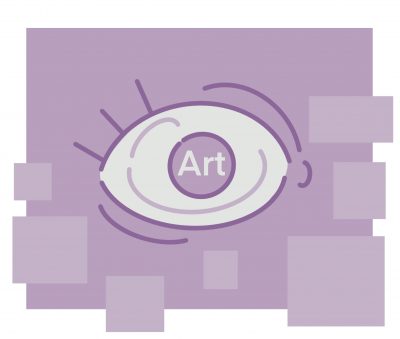Non-fungible tokens, or NFTs, have recently gained a lot of press because of the millions of dollars being paid for them.
I’m no expert, but despite what the uber-wealthy of the art world want to believe, NFTs are not the future of fine arts, and here’s why:
NFTs are essentially a token that is unique and irreplaceable. They’re like pieces of art — which kind of hurts me to say — in that there’s no inherent value to the token, but it’s assigned value by collectors or buyers.
Ethereum, which is both a blockchain system and a cryptocurrency itself, is where most NFTs are created and stored.
But how this works is that when you “own” an NFT, you don’t really own it. Any NFT that’s been purchased is most likely found by accessing a URL to an address on the blockchain, and anyone curious enough could look through the blocks, open it and download the file for themselves.
Yes, you read that right. The animated video of former President Donald Trump lying with his face flat in a park — which that artist, Beeple, created and sold for $6.6 million — can be yours for the bargain price of $0. This $69 million image by the same artist? Same thing.
This is why it hurt me a little to call NFTs pieces of art. In reality, they’re a bit more like Pokémon or Match Attax cards. It’s not like you really “own” that piece of art or data — it’s more like you have the bragging rights to say the original is yours if it is.

It’s difficult to say with 100% certainty the technology behind NFTs won’t be valuable in the future. Nike has patented NFT tech that, through the blockchain, can verify the authenticity of a pair of shoes. NFTs on Ethereum were first used to own an item in a video game called CryptoKitties. Video game integration and hybrid verification are both very promising ways to use NFTs.
But fine art? Will a URL to an image an artist created ever truly rival owning a physical Monet painting? I don’t think so. There’s absolutely nothing stopping someone from creating exact counterfeits of an NFT, and the bragging rights to an NFT seem like a minimal gain.
Industry insiders are also worried we’re creating a bubble in NFT art based on internet buzzwords and media hype.
“When the stock market crashes … NFTs will be the first thing to liquidate as they lack any practical use as a utility (unlike ETH itself) and currently lack enough popular market support to stand alone as a store of value,” writes Ken Hashimoto — owner of art galleries in New York and San Francisco that have been accepting cryptocurrency as payment for years — in a Facebook post.
But who knows? Art is something we can really only explain through feelings, and people have been known to pay exorbitant amounts to own what can only, at its essence, amount to paint on a canvas.
Maybe NFTs can be just as valuable as physical paintings. There’s really no reason for NFTs to be valuable, but there’s also no real reason for a painting to be valuable.
But in its current state? No, NFTs won’t be revolutionizing the fine arts world anytime soon.














